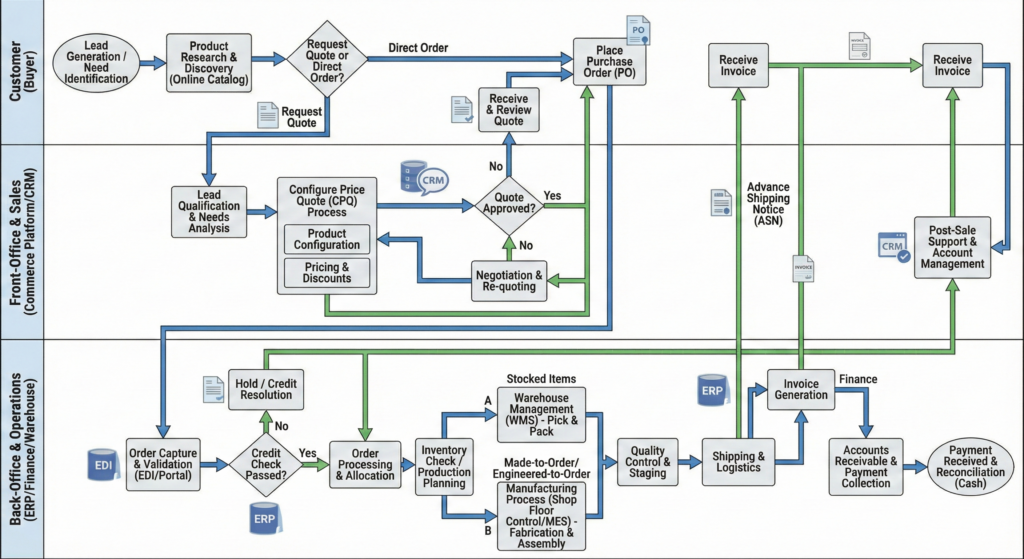- [email protected]
- Arlington, TX. -110 W. Randol Mill Rd.
- Frisco, TX. -9355 John W. Elliott Dr.
Architecture Strategy
B2B Commerce Platform & Data Architecture Strategy
B2B commerce fails when platforms fight and data is a mess. This fixed-scope engagement sets the target-state architecture and the rules of play for your stack. We deliver the vendor-neutral plan so projects stop stalling, custom code is contained, and every build moves the P&L in the right direction.

“Build the right stack. On your cloud. With clean data. We provide the blueprint to reduce friction, increase margins, and ensure no single vendor owns your core data or workflows.”
This strategy is designed to solve the most common B2B tech problems: fragmented tools across ERP, CRM, and PIM; custom code without guardrails that drives up costs; and dirty, duplicated data with no clear ownership. It ends the slow quote-to-order flows and replaces endless vendor pitches with a clear, fact-based decision framework.
Target Architecture & Integration
We deliver target-state diagrams for your core domains (Catalog, Pricing, Orders) and API-first integration patterns for your ERP, CRM, and WMS, establishing a clear source of truth for data.
Governance & Roadmap
You get a canonical data model with clear ownership, "build vs. buy" rules to prevent vendor lock-in, and a sequenced 12-18 month roadmap with budget bands and measurable KPIs.

The Value of a Strategic Blueprint
- De-Risk Major Platform Investments
- Stop Vendor Lock-In & Control Cost
- Create a Single Source of Truth for Data
Is this tied to a specific platform?
No. This engagement is 100% vendor-neutral and focused on your business outcomes and total cost of ownership (TCO). We design the right architecture for you, not for a specific vendor's sales quota.
Do you also execute this plan?
Yes. This strategy engagement delivers the blueprint. Many clients then pair this with our PMO-as-a-Service, where we provide the hands-on delivery, accountability, and vendor management to get it built.
What is the timeline and typical investment?
This is a fixed-price advisory engagement that typically takes 4 to 6 weeks. The investment is sized based on your system count and complexity, with a typical range between $50k and $75k.

